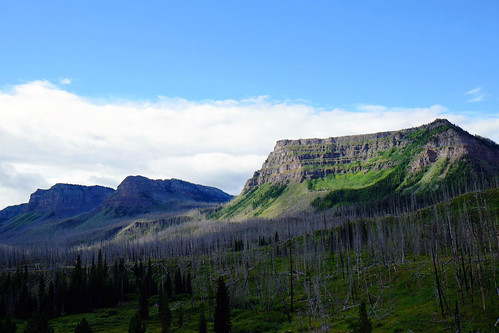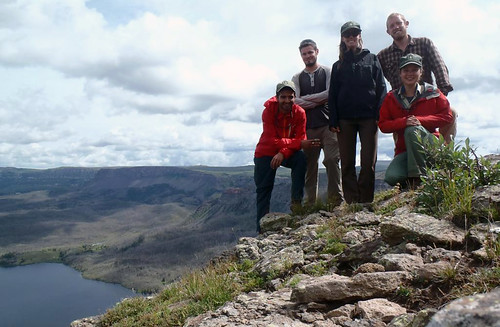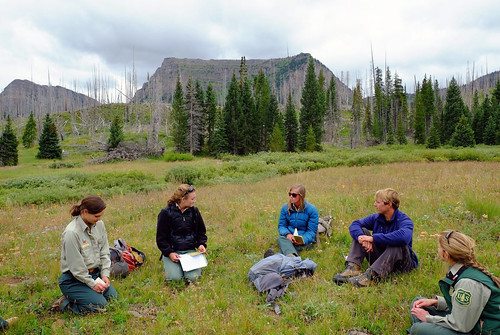
In 1919, landscape architect Arthur Carhart made his first journey to Colorado’s Trappers Lake and the Flat Top Wilderness. His idea of keeping natural areas of beauty free from development inspired the Forest Service to be the first natural resource agency to push for designated wilderness areas.
The grandeur of the area recently inspired Forest Service employees from the White River National Forest to retrace Carhart’s 25-mile hike through the wilderness across trails with names like Wall Lake and Trappers Lake to the Cradle of Wilderness on their way to the lake. Like many a hiker who visits wilderness areas, they were inspired by the variety of experiences they encountered during their pilgrimage.
In celebration of the 50th anniversary of the Wilderness Act of 1964, they recorded their thoughts and experiences to share with others. Wilderness rangers from the forest’s Eagle - Holy Cross and Blanco Ranger Districts saw, did, and felt:
“We walked the braided trails across the open meadows to Shepard Lake, circled around Shingle Peak, camped at Wall Lake, and viewed Trappers Lake from the Amphitheater,” said Maggie Vest. “During our journey, we crosscut trees, re-naturalized campsites, and played chicken with the rain – because the rain will always stop if you put your raingear on. We crossed through two districts, which allowed us to see familiar and new areas. The familiar areas brought back memories of coyotes yipping and echoing back on Shepard Lake as the super moon was rising.”
Similarly, Arthur Carhart wrote, “a coyote choir yapped crazily, suddenly hushed their chorus as though echoes of their own yammering flung back, and scared them, then started again their wild, blood stirring chant of backcountry, of wilderness.”

The rangers wrote about their gratitude, to be able to enjoy the experience that inspired Carhart. They recorded many memories of their own while working in the woods:
“... found king bolete mushrooms bigger than our faces and proceeded to eat them.”
“... eyed beautiful geodes scattered about as we walked the ridgeline towards the summit of Flat Top Mountain.”
“... got sidetracked by a bear sighting and completely missed our turn, and ended up two miles off trail.”
Often the experience of being in wilderness inspires a treasured perspective.
“Our summer in the Flat Tops has brought a sense of place to all of us, a home away from home where we have all felt deep connections to the small moments and big landscapes we traverse every week,” Vest said. “The wilderness is meant to be a place where man is only a visitor, although as seasonal [workers] we sometimes feel like we are a permanent piece of the landscape.”
“We spend more nights in a tent than a bed, more time off trail than on, and see more sunrises than sunsets,” said Priscilla Williams. “Backpacking may not always be glamorous, but we love our jobs and are so thankful to be wilderness rangers during this time of celebration of our public lands.”
Arthur Carhart believed that Trappers Lake should be a place for everyone. His reluctance to develop this area helped to bring about the idea of what we know as wilderness today.
“As we approached Trappers Lake for the first time, we hadn’t yet understood why the lake within itself held the cradle of wilderness,” said Williams. “But as we sat and viewed the lake from the top of the Amphitheater, we began to fully grasp why Carhart was so profoundly moved to protect this place and primitive areas as a whole.”
The rangers expressed hope that all can find passion to help preserve the special places where we can connect with nature and find the courage that Carhart manifested as he stood up to the pressures of the modern day.
Despite all the challenges of wilderness, we look forward to another 50 years of preservation and upholding one of the greatest acts in American history.
Find the live version of the wilderness rangers’ memorial trek posted on the White River National Forest Facebook.

